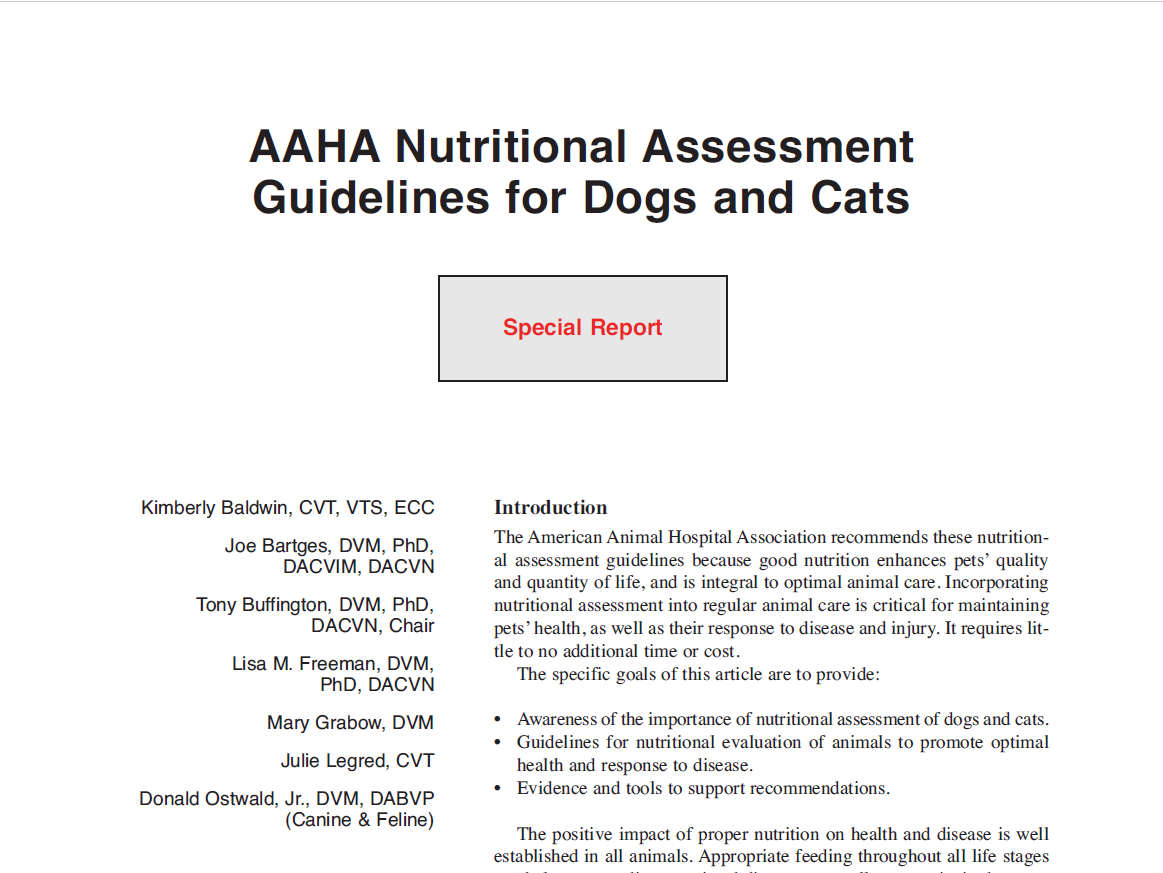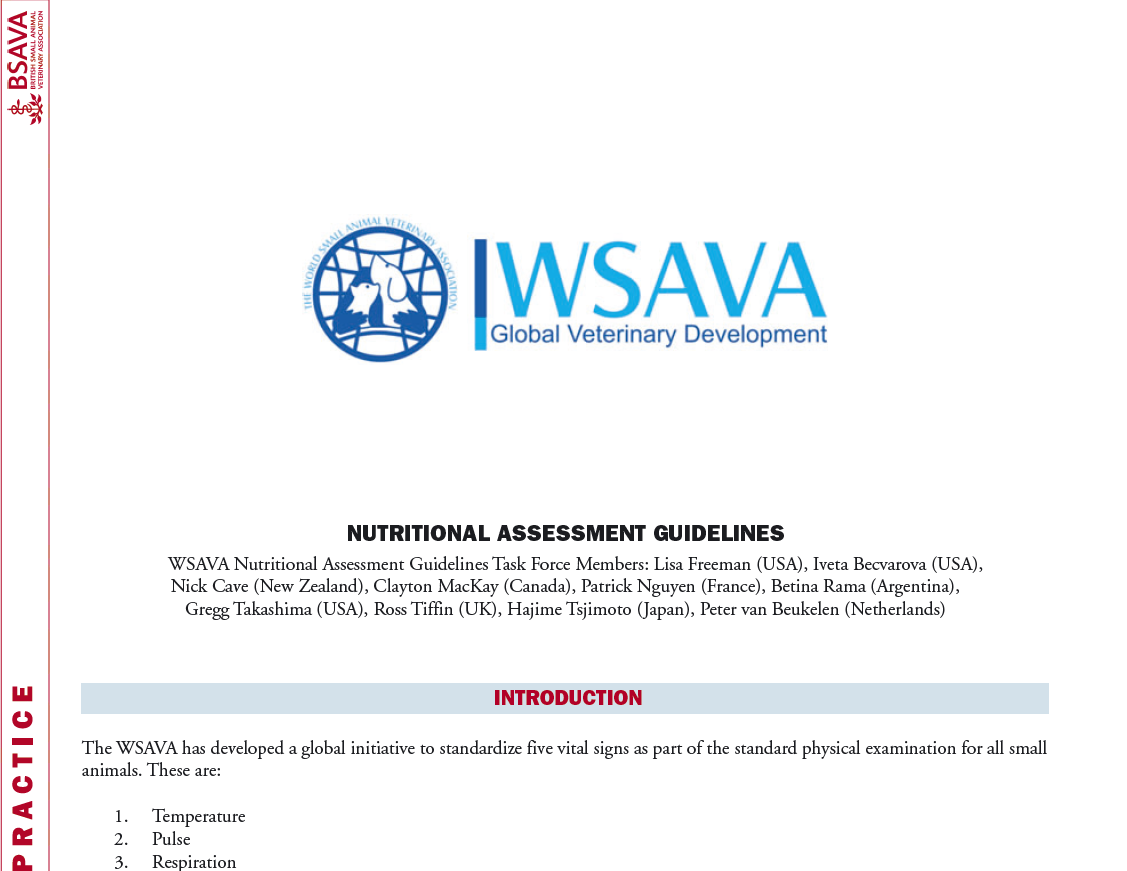Nutritional Guidelines
Executing a thorough nutritional plan for a patient is a lifetime commitment between the veterinarian and the pet owner. Each patient is unique, and a variety of factors need to be considered when designing a nutritional plan. These factors can be divided into animal-specific factors, diet-specific factors, and environmental factors.
Animal-specific factors might include the patient’s life stage, gender (including reproductive status), size, and breed. You should also take into consideration the patient’s current health status as well as any medications or supplements being provided to the patient.
Diet-specific factors should be considered for all foods consumed by the patient including treats, table food, medications and supplements, and edible chew toys. These factors range from the caloric density and nutrient content of the foods to the handling and processing of the foods. Diet-specific factors even encompasses how the foods were prepared, especially in cases of homemade diets.
Environmental factors are typically discovered during the history-taking part of the nutritional assessment. It is important to determine who feeds the patient, how much is being fed and how often feeding is performed, whether or not there are other pets in the household and how they are fed, what stressors might be present in the environment, and more.
All three components must be examined to create an effective nutritional plan, and re-evaluated over time to maintain healthy nutrition.

